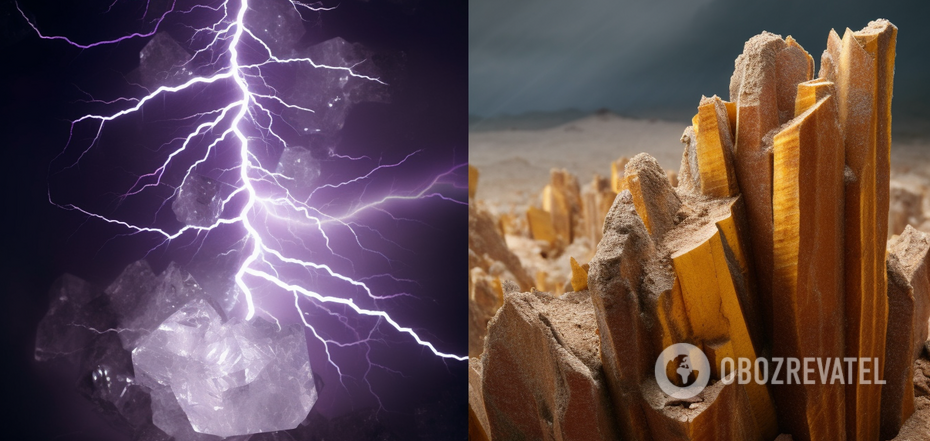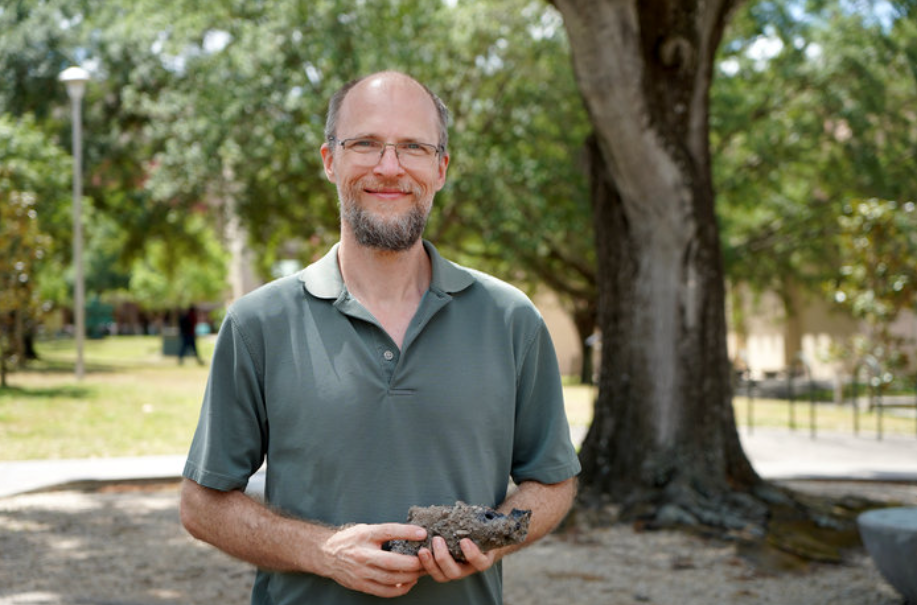Life
Lightning has created a mineral on Earth for the first time that was previously found only in space
Thunderstorms, which have become more frequent and intense due to climate change, sometimes lead to very unexpected results. For example, a lightning strike created a completely new phosphorus mineral on Earth, similar to the one previously found only on meteorites and in space. At least, this is the first sample known to science that has been recorded on our planet.
The incredible find was reported by Talker. The researchers suggest that lightning strikes, such as the one that created this compound, could have led to the formation of chemicals that gave rise to life on Earth.
The mineral was found at the site of a lightning strike in a tree in New Point Richey (Florida, USA). As a result, a fulgurite was formed there - a piece of sintered rock (stone, soil, sand, etc.), which is also called fossilised lightning. It was discovered by the owners of the land plot and handed over to scientists for study.
Professor Matthew Pasek from the University of South Florida (USF), who studied the fulgurite, said that the mineral found in it had never been found naturally on Earth. "Minerals similar to it can be found in meteorites and space, but we have never seen this particular material anywhere," he said.
According to the geologist, when lightning strikes a tree, the ground underneath usually explodes and the grass dies, leaving a "scar" of baked rock and sand around it.
Pasik studied fulgurite together with Luca Bindi, a professor of mineralogy and crystallography at the University of Florence in Italy. They published the results of their work in the journal Communications Earth & Environment.
The scientists are interested in minerals containing phosphorus, especially those formed as a result of a lightning strike. In this way, they are trying to better understand the nature and consequences of high-energy phenomena.
In humid environments, such as Florida's climate, iron often accumulates and coats the roots of trees. When lightning struck one of them, the discharge not only melted the metal, but also burned the natural carbon contained in the wood. The two elements led to a chemical reaction that resulted in the formation of fulgurite, which looks like a metal "ball". And inside it was a colourful, crystal-like substance that had never been found on Earth before.
When USF graduate and geologist Dr Tian Feng tried to recreate the mineral in the laboratory, he failed. This indicates that the material is likely to form rapidly under certain conditions and, when heated for a very long time, will turn into the mineral found in meteorites.
According to Dr Feng, previous research has shown that the transformation of phosphates by lightning was a common phenomenon on early Earth. "However, there is a problem with the environmental phosphite reservoir on Earth, which makes these solid phosphite materials difficult to recover," the scientist explained. He also added that this study may prove that other forms of reduced minerals are likely, and many of them may have been important for the development of life on Earth.
Meanwhile, Professors Pasek and Bindi intend to continue studying the material to determine whether it can be called a mineral and how to present it to the scientific community in the future.
Earlier, OBOZREVATEL told what danger Antarctic volcanoes can pose to humanity.
Subscribe to OBOZREVATEL's Telegram, Viber and Threads channels to keep up with the latest developments.




























